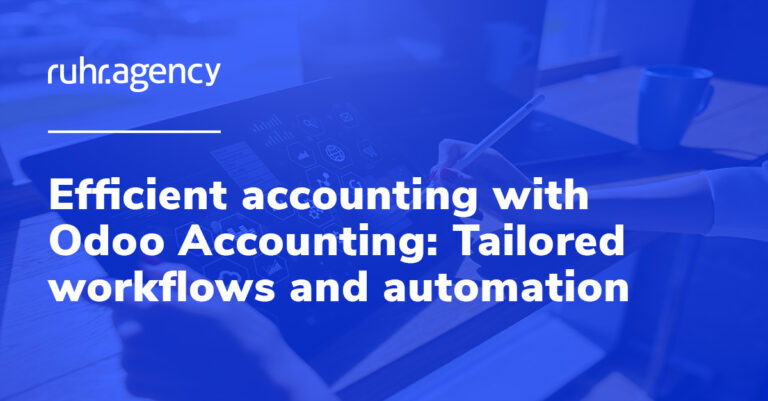Covid as a catalyst for Digitization
In the past few years, we have witnessed digital progress like never before. The Internet, smartphones, apps and artificial intelligence marked a watershed in our lives. But this development didn’t just reach our private lives. The business world was hit by these changes as well. Urban centers are extinct as we increasingly consume online, enterprise software is no longer rackware but sourced as a service from the cloud, and product demonstrations no longer take place only on-site but virtually.
Circumstances that were changing and many companies were already responding to in the past. The Corona pandemic came, however, and paralyzed large parts of our social and economic life. What had previously been a digital option became a necessity. Shopping was only possible online or by pickup, trade shows suddenly took place virtually, and even the daily team meeting was held via online conference. Covid19 acted like a catalyst for digitalization. This changed our daily life and work permanently and will continue to change it in the future.
These shifts in the underlying conditions also led many companies to consider how their own business model could be adapted to the changes.
Changed behavior = changed business models
Our changed behavior since the outbreak of the pandemic has forced companies to adapt their business models accordingly. Even before that, a large proportion of entrepreneurs were aware of the fact that their business would change as a result of digitization. What changed with Covid-19 was the new time horizon. And thus, restaurants became delivery services, retail stores became online retailers, and sales representatives became call center employees. Only those who digitally transformed and positioned themselves could successfully continue their business in the changed environment.
Experience has shown that small and medium-sized companies and start-ups are more agile and were able to implement the change process more quickly than larger companies. However, regardless of whether it is a small or large company, changing business models should never be done on gut instinct. It is important to analyze the current state and potential threats, gather ideas, and then implement them.
As an entrepreneur, how can you adapt your business models?
- Inventory
When analyzing the current status, you should think particularly about who your customers are and where you find them? The question of what services you offer and what benefits these services have should also be included in the inventory analysis. In addition, you need to answer the question what revenues you generate with the services and what costs are incurred in providing them? In a nutshell, it’s about your customers, benefits, value creation and finances. You should also consider these four segments in the next points.
- Threat Analysis
Customers: Which customer segments are breaking away due to Corona and which channels can no longer be used? For example, if you are active in trade fair construction or in catering services, the question arises as to which services can no longer be provided? Do elements in the value chain such as procurement, production or sales disappear? In terms of finances, it should be determined which sales are at risk and which costs will remain.
- Ideas
Once you have analyzed the current situation and the potential threats, you can derive ideas for new business areas. Again, consider the four areas: Which customers can you address alternatively? Are there new channels to address customers? Are there other or additional services you can offer? In terms of value creation, you should ask yourself whether existing resources can still be used or whether they need to be replaced by alternatives? In terms of finances, you need to find out which revenues can be secured and what opportunities exist for new revenues. On the expense side, it may be possible to achieve savings that do not inhibit further growth.
- Implementation
Once you’ve done your analysis and come up with ideas for new business, it’s time for implementation. Prioritize your list and remain agile and flexible during implementation. Only if you react quickly to changes or change incorrect assessments you will succeed in transforming your business.
What do changing business models mean for your everyday work?
Changing the business from off to online just out of the blue, selling new services or products or addressing different customers can be done quickly with a good planning, but it also affects the work and processes in your company. If the sales representative suddenly has to book orders online or the inventory has to be linked to the online store, this means changing entire workflows.
The decisive factor here is how far digitization has advanced in your company. If processes and work have already been done digitally before, a changeover will succeed more quickly and without major disruptions. If analog and digital processes have to be merged first, the changeover will take longer. And in this case, your employees must also be prepared for the new situation through transparent communication and training.
How an ERP system can support change management
A changed business model means one thing above all: communication. External communication, so that the target groups are informed about the new products or the new service. More important, however, is internal communication. Change can only succeed if your employees understand the meaningfulness of this change. But what does this have to do with an ERP system? An ERP automates and standardizes processes and enables cross-functional and cross-site collaboration. It also creates transparency in all areas. In this respect, the use of an ERP-Systems can support the change process in a meaningful way. Employees have the same data basis, can work together on projects and follow the development of the company.
On the business side, the use of an ERP also pays off: It reduces business costs by standardizing data, optimizing processes – from purchasing to dunning – by saving employees’ time thanks to automation, and also by increasing employee acceptance and motivation. Thanks to process-oriented workflows, automated and manual tasks mesh seamlessly. This reduces unit labor costs and turnaround times. Working with an ERP system ultimately leads to greater efficiency and productivity.
In addition, there are many other advantages of an ERP, which we highlight in detail in this Article.




